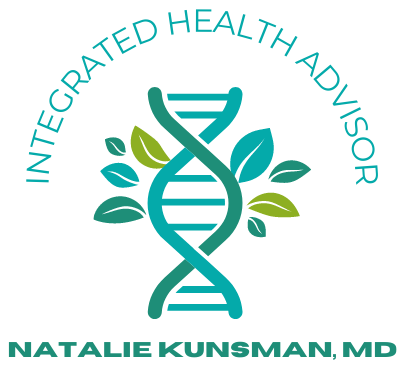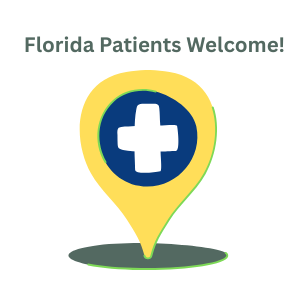I work in a cute walk-in/ acute care on the coastal Mid-Atlantic area in the summers. The walk-in is owned and operated by a private, previously family-owned hospital system that truly is a community gem since its inception. The patient demographic morphed from itinerant travelers and beach vacationers to permanent residents who migrated to the area after Hurricane Katrina, and those who were looking for life in a lazy, quiet, coastal community. If I have heard it once, I’ve heard it a thousand times from the mouths of the walk-in patients, “I can’t find a doctor,” or, “I can’t get into my primary care doctor for months.” Why is this? Do we really have a shortage of doctors? If we do have a shortage, what can we do about it?
A sector of the Baby Boomers (born 1946-1964) who had viable working years left retired earlier than expected in the ‘Great Resignation.’ There are 3.2 million more retirees in 2020 than in 2019, surely more than predicted. The reports specifically state that the ‘health care system was the hardest hit with this (the “Resignation”). Nearly 20% of the healthcare workforce quit their jobs since 2020. I belong to the Generation X crowd (born 1964-1985), and true to its notoriety as a workaholic generation, I also wore the workaholism like a badge of honor. I provided for my patients, my family, my future, and darn it, that’s what makes the world go round! However, we Gen-X-ers are now sandwiched in between the Millennial Generation and are quietly watching our kids balance their work lives with their personal lives. And whereas medicine was once considered a profession of endless hours, endless on-call, work out of your home until the patients stop coming, house calls and nursing home care in the middle of the night, it is now considered a job, not necessarily a calling, by younger physicians. Forty hours is enough per week. I think I agree with them because my generation is tired. Medicine has become more corporate and employment-based (no longer the community offices in the neighborhoods) with mandates, higher work demands, less support staff, and more electronic health record patient email demands. The unsustainable level of burnout is the number one reason why 68% predicted shortage of physicians is predicted by 2025. There. I said it. We are burned out. We physicians were also recently left with bag standing face to face with patients who were sick and unable to be seen or properly managed, or worse, chastised by medical decisions they were making. These are straws that break the camel’s back when someone other than the physician is running interference with the sacred bond between the patient. I digress, but not really. The Millennials will not take it and the Generation X-ers have had enough, while the Baby Boomers are trying to squeak by with their retirements that are smaller from the shortened work span.
I know the costs of doing business escalated to the point that my once privately-owned practice in my hometown could not compete for nurses’ and support staff salaries and benefits while paying for the electronic health record that was mandated by insurers and systems. Keep in mind that in those early days, T1 lines had to replace modems, and computer terminals and software was purchased and not available in the “cloud.” It was a huge cost just to upgrade an office, and I had three. Folding into a health system was inevitable, but the lack of control of decision-making should not have been. Not all changes are necessarily bad, but an extremely skilled job that requires urgent and high-level decisions cannot be interfered by people who cannot understand the job of a physician. This was yet another strike in favor of physicians leaving stable-paying jobs to avoid diminishing credibility, low patient satisfaction, and reduced patient safety, certainly exacerbated in the pandemic.
Thought leaders in my business reported the risks and demands asked of us early in the pandemic when protective gear was scarce, and the deadliness of the virus was unknown. We were asked to potentially re-deploy and work in places outside of our specialties. In my case, I chose the ER, ICU, and acute care, knowing I needed to brush up and educate myself and assume risk because that’s what we do as physicians. I also was prepared to travel over an hour to another part of the state if the predicted wave of sick patients came. The same people who were mandating risk to the healthcare teams were working safely from home. Those of us who burned out, were forced to leave because of impossible contract demands and unfair play from administrative bullies, or feared for our reputations and ethical credibility, have decided to take simpler and more autonomous paths. Sadly, some physicians left the profession altogether. If I represent the usual physician in primary care, I can say that money may be the reason doctors stay employed for a while, but it is not enough in the long range to stay in impossible circumstances.
Have we seen younger generations applying and getting into medical school? Yes, indeed. The number of medical students has grown by 37% since 2002. And while we must nurture the current physician staff, we must also do so for the incoming students. The aging population is growing, and the incoming physicians are growing, but not fast enough to replace the exiting physicians. According to “Definitive Healthcare” the total Baby Boomer providers leaving the market is 91,059 compared to the Millennial Providers Entering the market of 24,992. Since educational debt is so high (four years of college and four years of medical school tuition), new physicians tend toward specialty care and migration to cities for higher pay, leaving the rural communities at a disadvantage.
What I have seen thus far for solutions have been the emergence of walk-in and quick-care clinics. They are serving a vital role to at least patch up some deficits in access to care. Focus on the “patch up” concept. There are limitations in the primary care and medical needs of the aging population, but there are advantages to seeing a patient acutely and taking care of such things that an emergency room would not need to address. Incentivization is also at the route of attracting physicians to underserved areas. Physicians have the same overhead of raising a family with the additional costs of educational expenses that will take years to pay back. To the “corporate” mentality that has driven the 20 % staff exodus, in my prior and coastal communities, I have seen the true emergence of physician-led, MD-based CEOs in response to counteract the large disconnect of an administratively heavy “top down” oppression. This is one step in the right direction of those who “get it” when it comes to the needs of the patients as well as support required for a physician to do his/her job. As is, there are not enough hours in a day to complete all tasks funneling to the physician. If an engaged administration cared to fix this, transparent, active dialogue and visibility would go a long way to understand the problem to then undertake the solutions. The corporate culture will make or break institutions moving forward. I can tell you that the coastal community hospital is trying its darndest to remain a community leader for its growing patient population. Appreciation goes a long way. Listening to all members of a healthcare team with valued input will be crucial for the process moving forward. Insurers and administrators can no longer dictate terms, then change terms, then mandate, then overwork an already exhausted healthcare team. The resourcefulness of computer and electronic health records could help rather than hinder this process. The widely open portals with free access 24/7 to the physician is killing any balance in the workplace and overwhelming any ability for better patient access. Telemedicine can also address patient access. Physician autonomy is also at the epicenter of improving the workplace culture. And while it may seem too late for the droves of physicians who left their jobs and careers, it certainly is the wake-up call to the nation about how we deliver healthcare. I have not left the career, but I sure have changed my position, autonomy, style, and personalization to my patient base. Those of us who left with our licenses and credibility intact may just redefine the career path moving forward with an even more engaged patient relationship by eliminating all the “middlemen” we have dealt with throughout these past years.





